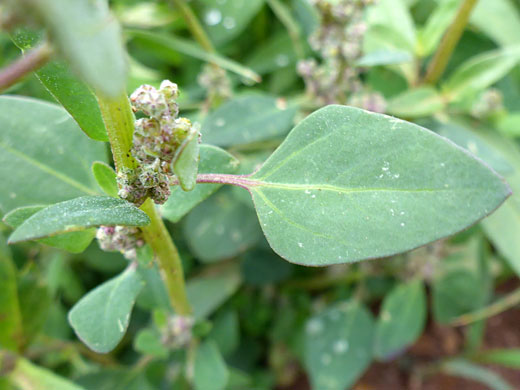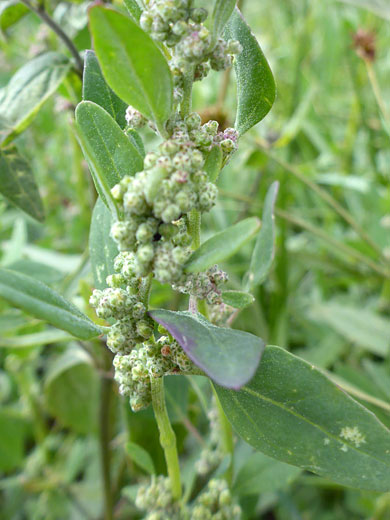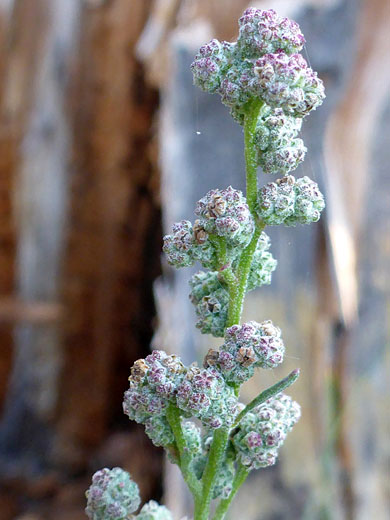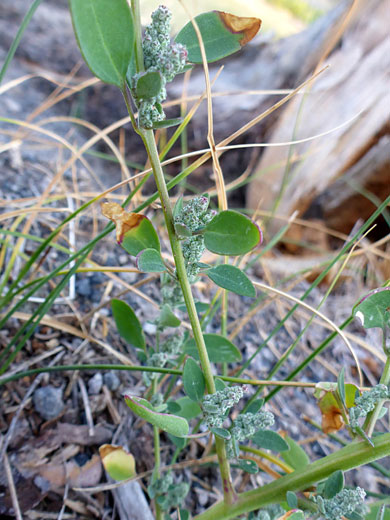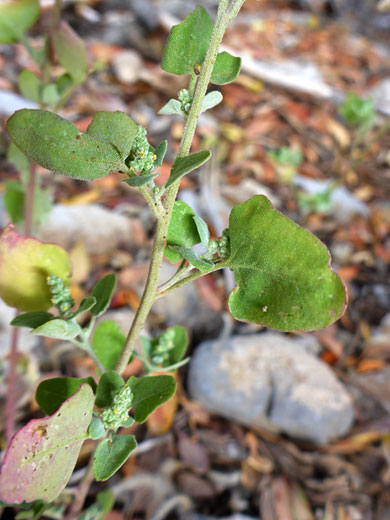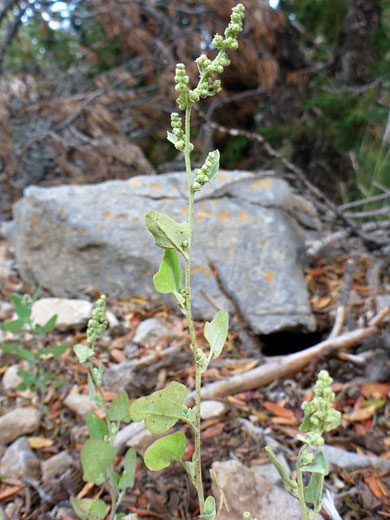Chenopodium Atrovirens, Pinyon Goosefoot
Plants > Wildflowers > Amaranthaceae > Chenopodium Atrovirens
Common name:
Pinyon goosefoot
Family:
Scientific name:
Chenopodium atrovirens
Main flower color:
Range:
Mostly in the Rocky Mountain states, and all states to the west
Height:
Up to 25 inches
Habitat:
Disturbed sites, woodland and open areas over a wide range of elevations; up to 11,000 feet
Leaves:
Ovate, oblong or oval, up to 0.9 inches long
Season:
July to October
The flowers of chenopodium atrovirens are tiny, formed of five green sepals, five greenish petal-like lobes, five stamens and two stigmas, and they are produced in dense clusters, at the top of the stem and at the leaf nodes. More noticeable, and long lasting, are the fruits, which are also colored green initially, becoming reddish as they mature. Fruits are roughly spherical, enclosed by the residual sepals, and, like the flowers, are covered by a floury, granular, pinkish-white coating. Fruits open to reveal a number of small black seeds.
Stems branch freely, reaching heights of around 2 feet. They also have a farinose covering, as do the lower surfaces of the leaves. The leaves have reddish stalks around half an inch long, and are usually ovate in shape, with a prominent midvein plus two side veins. Leaves are about twice as long as they are wide, and they occasionally have a pair of small lobes at the base.
Stems branch freely, reaching heights of around 2 feet. They also have a farinose covering, as do the lower surfaces of the leaves. The leaves have reddish stalks around half an inch long, and are usually ovate in shape, with a prominent midvein plus two side veins. Leaves are about twice as long as they are wide, and they occasionally have a pair of small lobes at the base.
All Contents © Copyright The American Southwest | Comments and Questions | Contribute | Site Map


